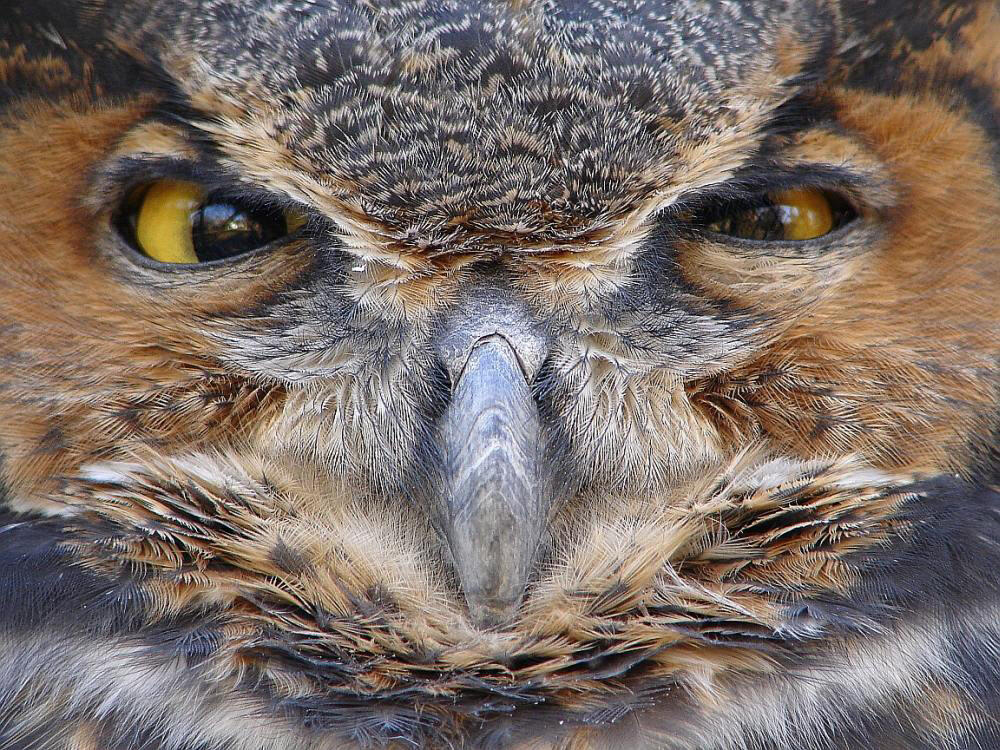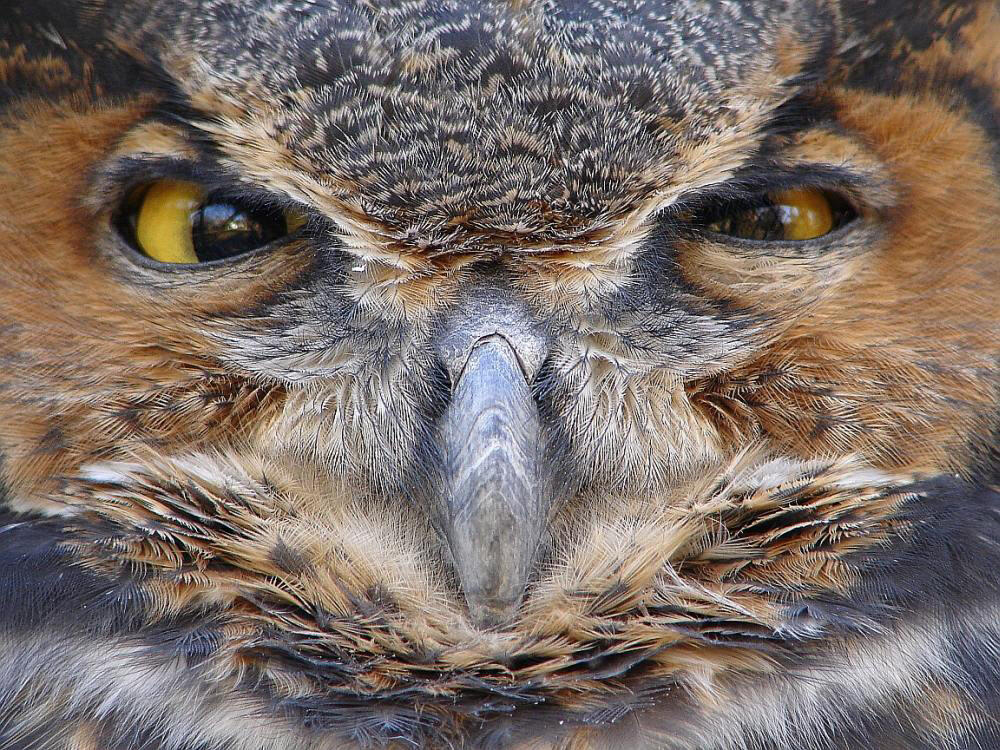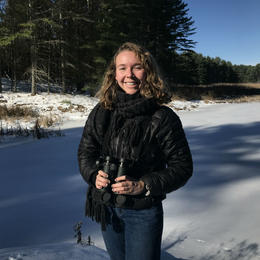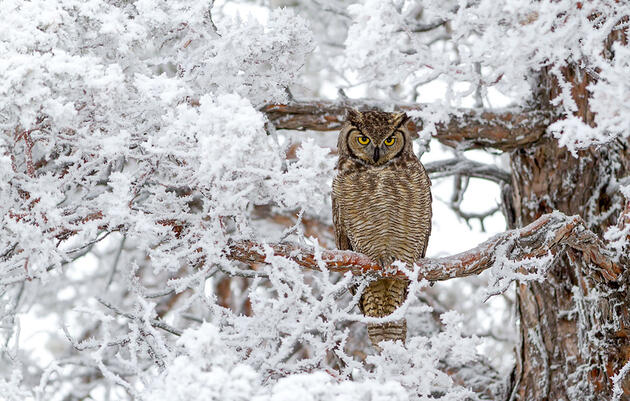I find owls to be some of the most intriguing birds because of how elusive they are. Voles and mice beware...they are master predators from their camouflaged plumage to their silent flight. There's a chance if you're walking a trail near dawn or dusk that you may bump into an owl. If you're lucky, you may live near the woods and hear owls calling into the night.
This article will focus on owls that live in Vermont year-round. We'll cover adaptations, identification and calls.
Although owls are not feeder birds, you can attract them to your yard and provide nesting habitat with nesting boxes. You can find more information about sizing and designs by species from Cornell’s All About Birdhouses database.
Binocular vision. Owls have large eyes compared to other birds because many are nocturnal, hunting from dusk until dawn, and need clear vision in low-light positions. There’s a myth that their large eyes would cause discomfort during the daylight, but just like us, their pupils dilate and adjust to light.
Owls have “binocular” vision, meaning they see objects at the same time with both eyes. This allows owls to see in 3-D and judge distance in a similar way to us.
Fun fact: If humans had eyes as powerful as an owl's they would need to be the size of a tennis ball!
Can owls really spin their heads all the way around? Owls can’t move their eyes the way we can. Instead of eyeballs, owls have elongated tubes that only allow them to look straight ahead. To compensate, an owl can turn its head 270° left, right and up or down/upside down.
Girl power! Like all birds of prey, female owls are always bigger than males.
Silent flight. Most birds are not quiet fliers. Maybe you've heard the frantic wings of the mourning dove before you see it - and ravens sound like mini jets flying overhead. With these birds air rushes over the surface of the wing, creating turbulence, which makes a whooshing noise. Owls have a unique comb-like edges on their wing feathers that "break down the turbulence into little groups called micro-turbulences which effectively muffles the sound of the air rushing over the wing surface and allows the Owl to fly silently (Owlpages.com).
Digestion. Owls eat small mammals, reptiles, amphibians, invertebrates, fish and other birds. No bird has teeth and therefore they swallow food whole sometimes. Most of an owl's diet is made up of bony or furry creatures that its stomach cannot digest so it needs to cough them up in the form of a pellet.
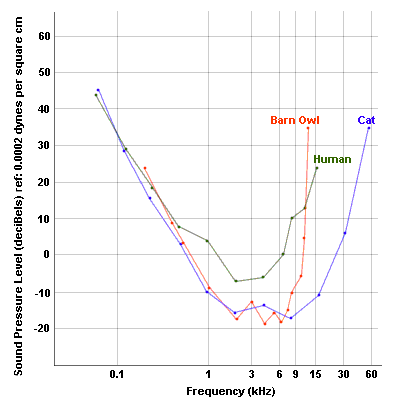
A note: While you're reading through each species' profile please note the left sidebar that depicts each bird - click on these to hear their calls.
Eastern Screech Owl
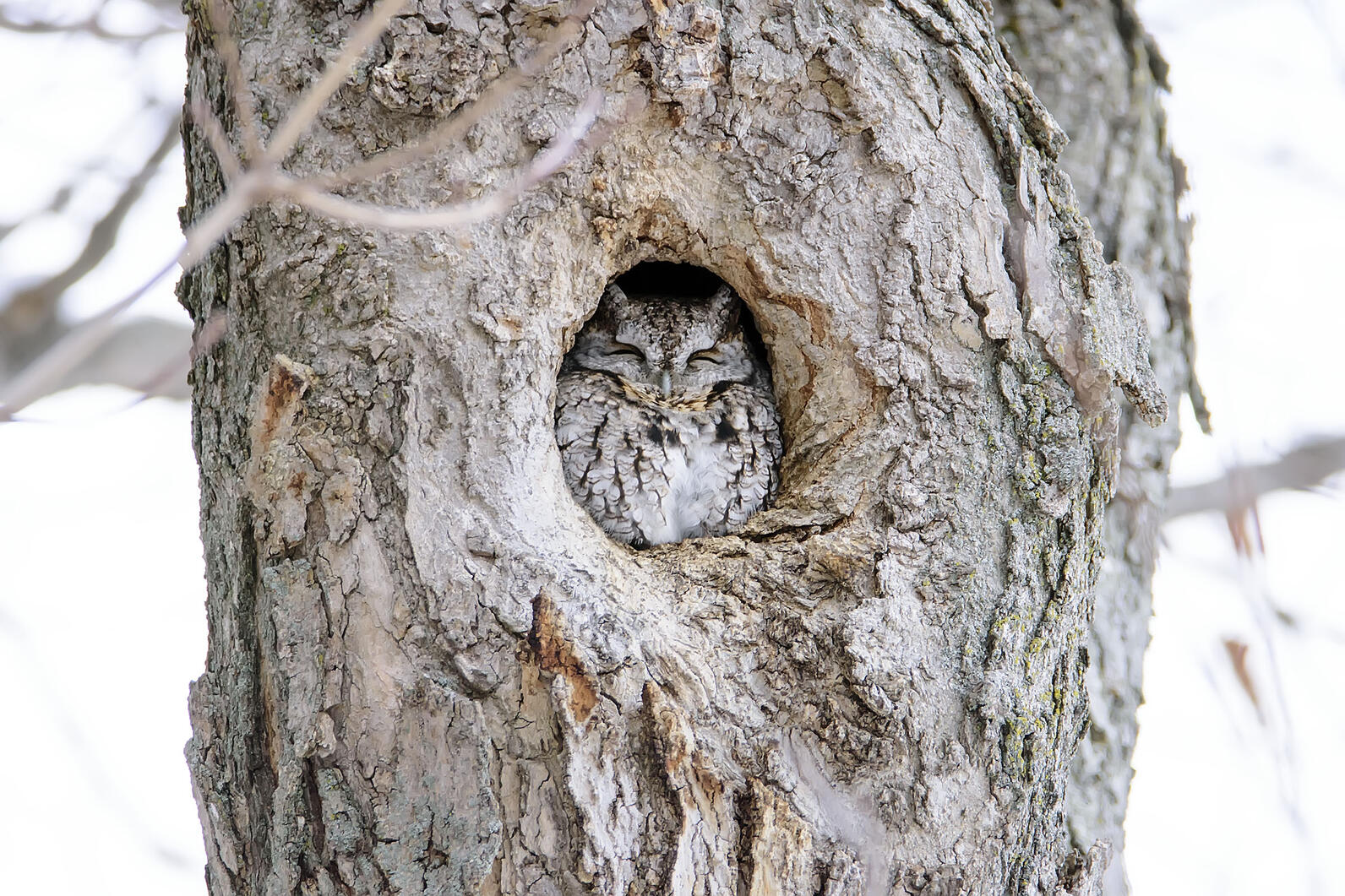
ID info: Nocturnal, robin-sized owl with short ear tufts and a dark bill. Feathers have darker vertical streaks and some barring. There are a few different color morphs of the eastern screech owl: grey, red and brown. The most common color morphs in Vermont are the brown and grey.
Habitat: Mixed woods, deciduous forests, parklands, wooded suburban areas, riparian woods along streams and wetlands (especially in drier areas), mature orchards, and woodlands near marshes, meadows, and fields (Owlpages.com). Their greatest predator is the Great Horned Owl so they avoid heavily wooded forests.
Diet: Small mammals and birds.
Call: A tremulous, descending wail; soft purrs and trills.
Barred Owl
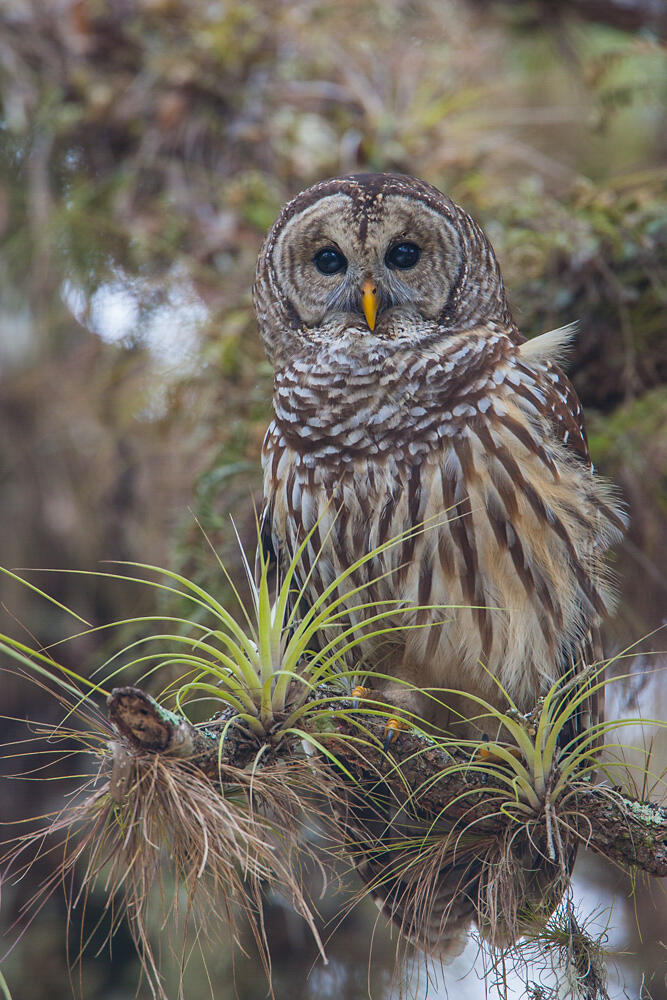
ID info: Large owl with a yellow bill and large, dark eyes. Light brown mask around the eyes, but the rest of the body is covered in a barred (striped) pattern of brown and buff-colored feathers. Usally stay with mating pairs throughout the year.
Habitat: Non-migratory, here all year long. Woodlands, wooded river bottoms, wooded swamps. Favors mostly dense and thick woods with only scattered clearings, especially in low-lying and swampy areas. Most common in deciduous or mixed woods in southeast, but in north and northwest may be found in mature coniferous trees. May seek shelter in a large tree cavity.
Winter diet: Small mammals such as voles, mice, opposom, rabbits etc. Ocassionally eats other birds.
Call: Who-cooks-for-you? Who-cooks-for-you-all?
Birding tips: Mostly active at night, but will hunt and call during the daytime.
Great Horned Owl
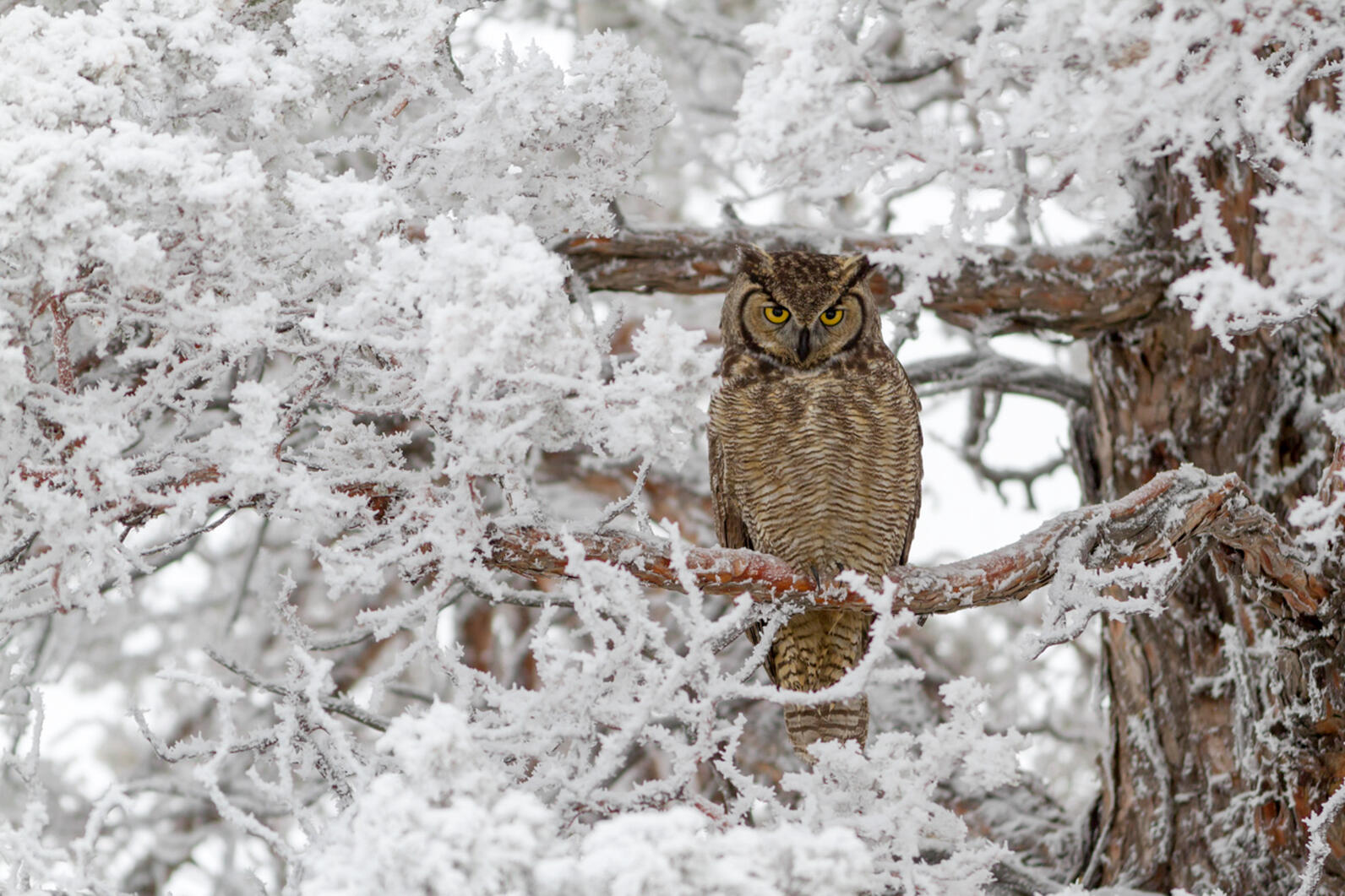
ID info: One of the largest owls in the Northeast, the Great-Horned Owl has long, earlike tufts, yellow eyes, and dark bill. Facial disk (face) is may be brown or gray and is outlined in dark brown. This owl looks like it has a 'widow's peak' of striped brown and white between its tufts. Brown and buff colored striped pattern on breast and tail feathers.
Diet: The Great-Horned Owl is a vicious predator - it can successfully hunt birds and mammals larger than itself. Like other owls, they also dine on small mammals.
Habitat: Can be found almost anywhere on the continent, year-round. Preference in the Northeast for dense, woody areas.
Call: hoo-h’HOO-hoo-hoo
Fun (impressive) fact: A Great Horned Owl’s talons require a force of 28 pounds to open once they are clenched around prey.
Northern Saw-whet Owl
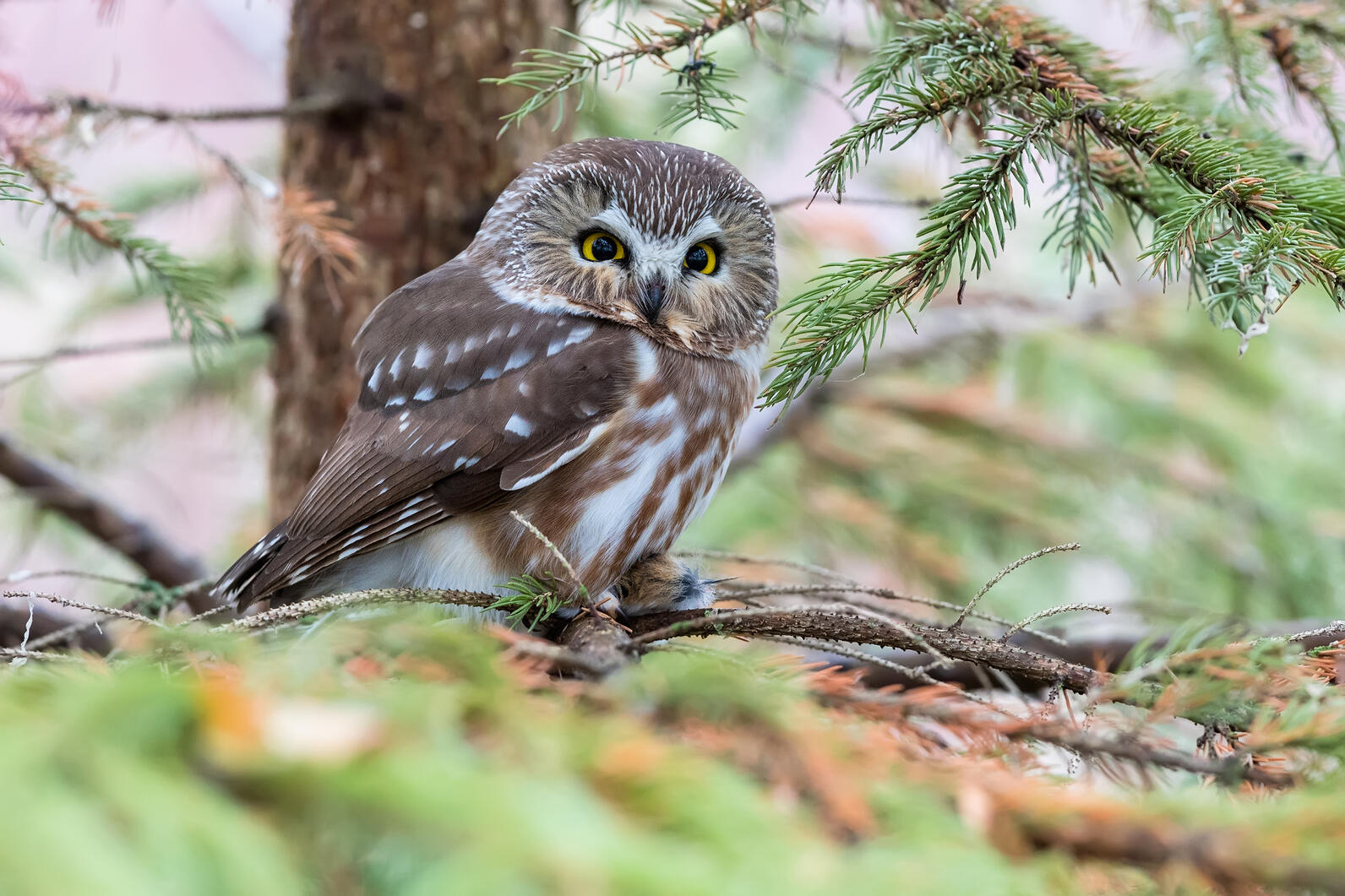
ID info: Small, round-headed owl with yellow eyes. Plumage is mottled brown and white. They have a distinct white "V" between their eyes.
Habitat: Winters in habitats with dense cover, especially groves of conifers.
Diet: Small rodents like deer mice, voles, and shrews. Occasionally eats another bird.
Call: Usually silent; in late winter and spring utters monotonous series of tooting whistles.
Tips for finding Northern Saw-whet Owls
Irruptive migrant: Snowy Owl
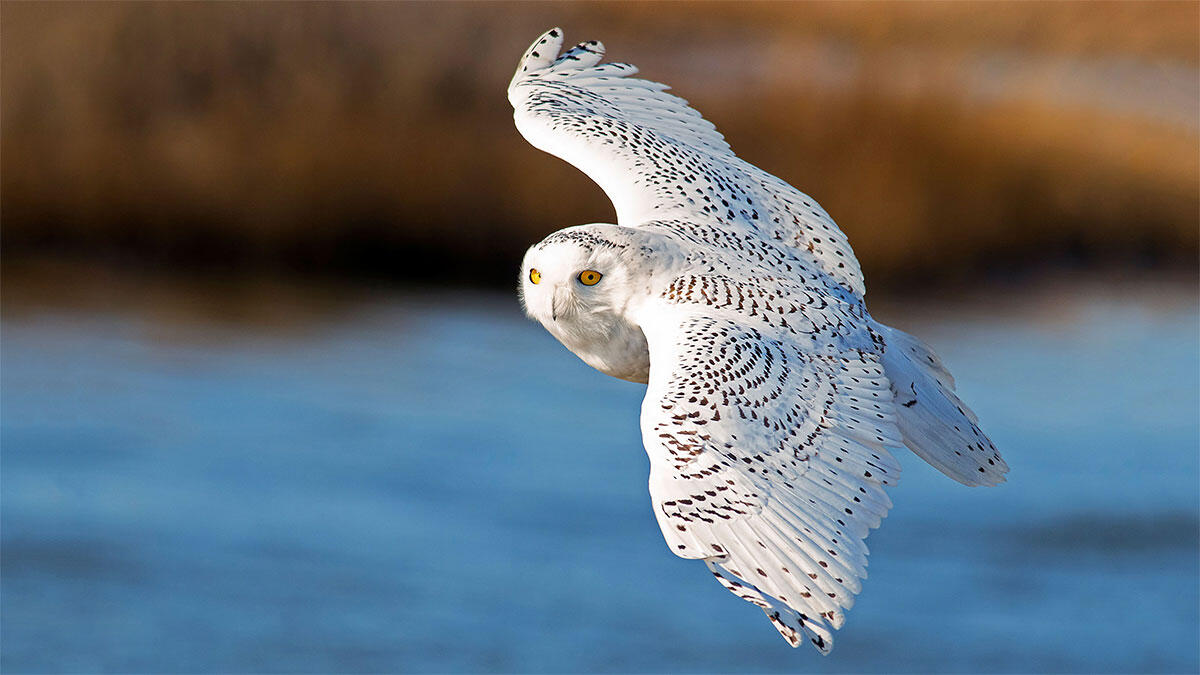
ID info: The Snowy Owl is hard to mistake for any other owl with its large body, striking yellow eyes and white plumage dotted with black.
Diet: Small birds, seabirds, ducks, squirrels, rabbits, and rodents.
Habitat: The high artic for most of the year where it blends into snowy landscapes. They are considered a nomadic species, often venturing out outside their normal habitat without predictability. Snowy owls are rare in Vermont, but the few visitors we get usually have a high profile in the media. You may be able to find them near snowy, flat areas like open fields or shorelines.
Call: Usually silent; hoarse croak and shrill whistle on breeding grounds.
Fun fact: The Snowy Owl is the official bird of our northern neighbors in Quebec!
General birding tips for owls:
-
Look at dawn or dusk. You may have luck at the edges of woodlands.
-
If you hear an owl call out try to call back or play the call from your smartphone.
- Hearing crows or jays calling in groups may mean there is an owl near by. This techinique is called 'mobbing' when birds gang up to bully prey away.
-
Keep your space. If you have binoculars, bring them so that you can give the owl space.
Owl Resources:
- Audubon's Guide to Finding Urban Owls - You don't have to live in the middle of the woods to see an owl. Here's how and where to spot five species in towns and cities across the U.S.
- Burlington Free Press article about a Snowy Owl - Our Conservation Manager, Mark LaBarr, talks about the Snowy Owl on Shelburne Road and Shelburne Farmms.
- All About Birdhouses - Cornell Lab of Ornithology's provides specs and construction plans for birdhouses and nestboxes by species.
- The Owl Pages - A wonderful, comprehensive site all about owls across the world. Explore owl physiology, behavior and news!
- Learn to ID 5 Owl Calls - Learn how to identify the Barred Owl, Great-Horned Owl, Eastern Screech Owl, Barn Owl and Burrowing Owls calls with Audubon.

